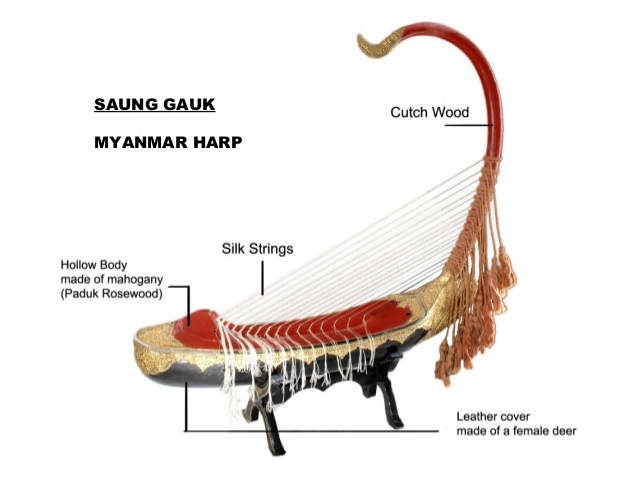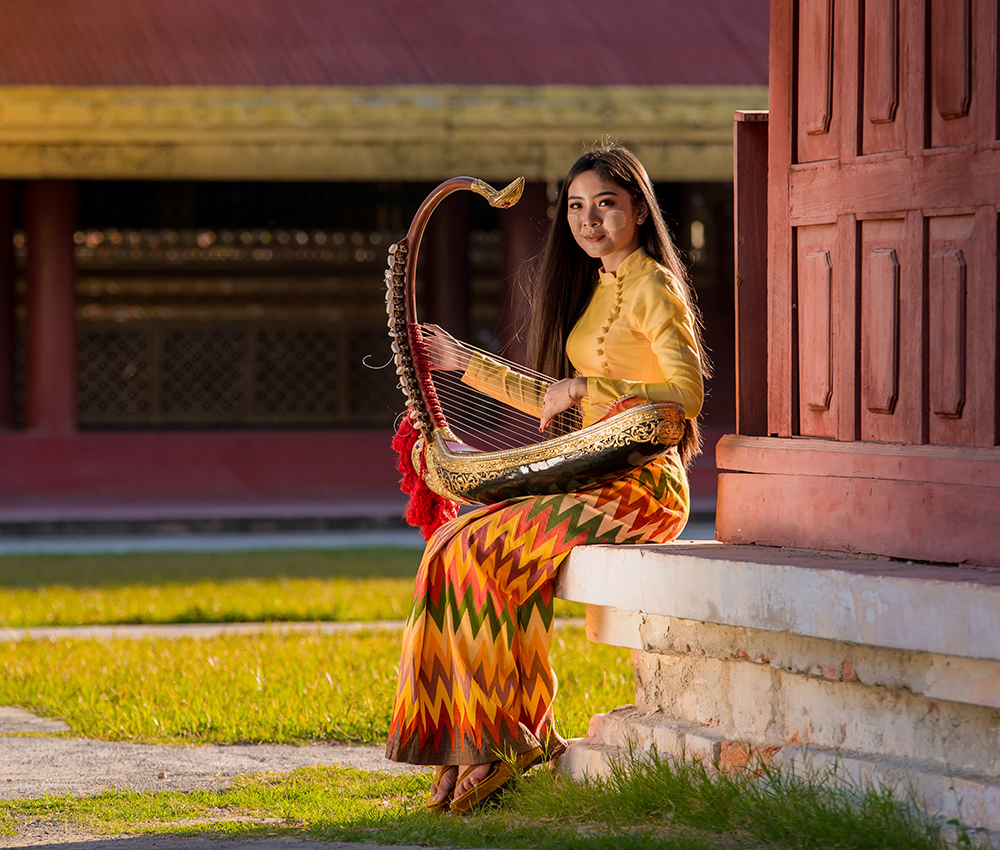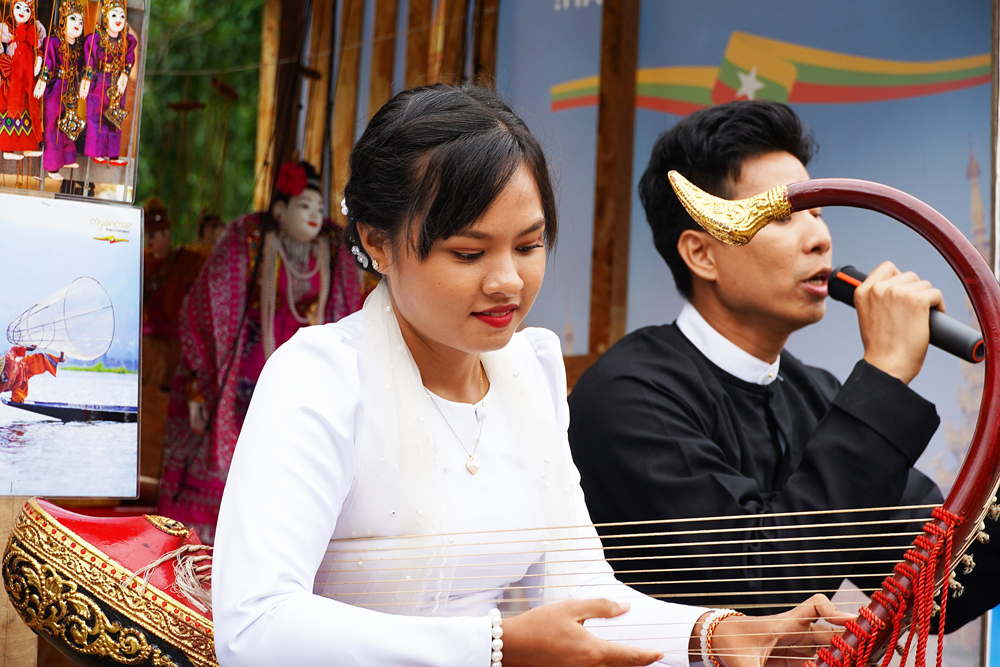Burmese Harp (Saung Gauk)
The Burmese harp, known as the Saung Gauk, is Myanmar’s national instrument and one of the most ancient and iconic traditional musical instruments in Southeast Asia.
Overview of the Saung Gauk
Name
Saung Gauk – Saung means “harp,” and Gauk refers to the curved shape of the instrument.
History
- Dates back over 1,000 years, with roots in the Pagan (Bagan) Dynasty (9th – 13th century).
- Used in the royal courts and classical music settings.
- Carvings and murals in Bagan temples show images of early Saung Gauk performers.
Structure & Design
Part | Description |
| Body | Made of teak or padauk wood, boat-shaped base. |
| Neck | Long, curved upward like a crescent moon, traditionally covered in deer hide or leather. |
| Strings | Originally silk, now often nylon or synthetic; typically 13 to 16 strings. |
| Decoration | Richly adorned with gold leaf, lacquer, and glass mosaics. Sometimes dragon or floral motifs. |

Sound & Playing Style
- Soft, lyrical, and flowing tone – perfect for romantic or spiritual music.
- Played while sitting, with the harp resting on the lap.
- Right hand plucks the strings, while the left hand modifies pitch or adds harmony.
- Often accompanies poetry, singing, or royal songs (Mahāgīta).


Cultural Significance
- A symbol of grace, elegance, and Myanmar heritage.
- Still taught in traditional music schools and performed at cultural events.
- Featured in classical dances and court music.
